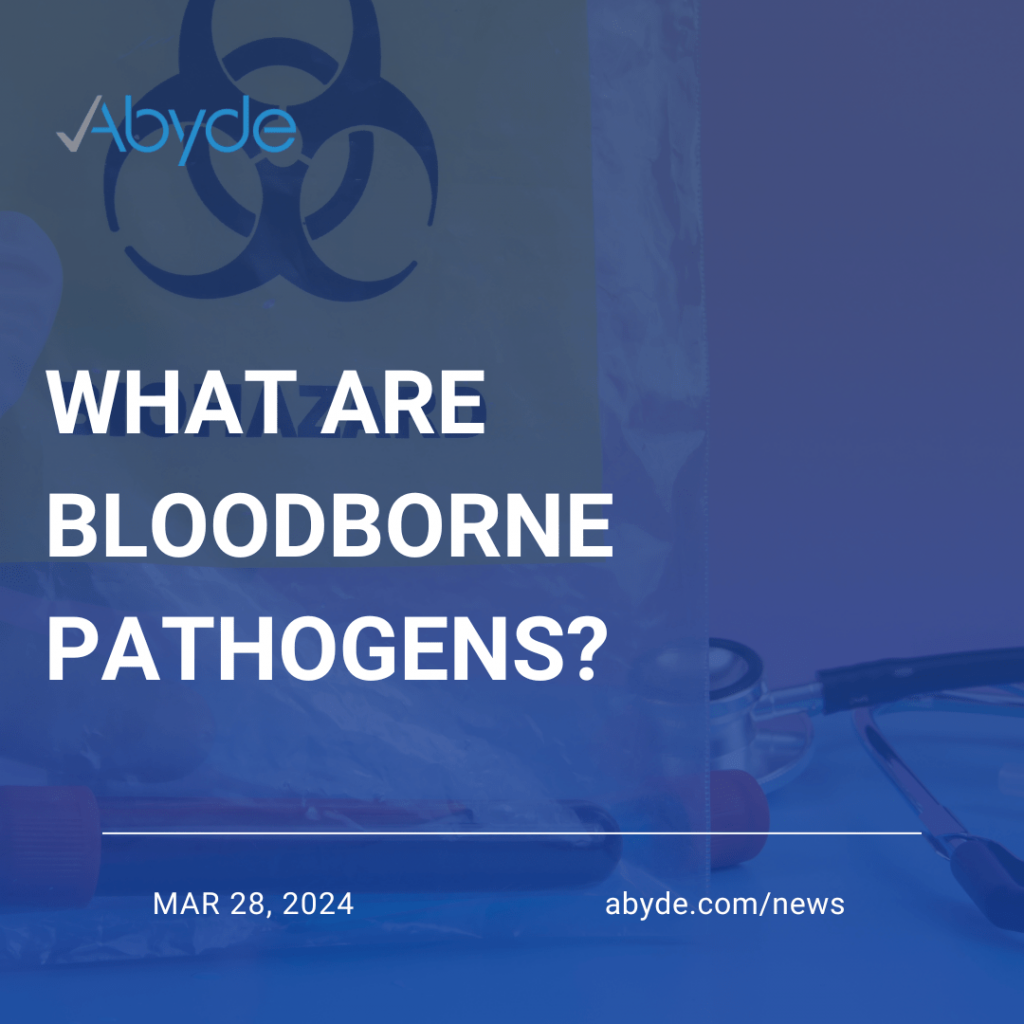May 15, 2025 On a global scale, more than 2 million healthcare workers experience needle-stick injuries on an annual basis. Dentists are at the most at risk, with 59% of dentists studied experiencing needle stick injuries. Dentists are particularly susceptible to OSHA violations due to the daily use of sharps and the increased possible exposure to bloodborne pathogens and saliva when working in patients’ mouths. Protecting your dental team through safety and compliance isn’t just a good idea—it’s essential. Here’s a clear look at the standard preventive measures for OSHA in dentistry. First Line of Defense: Training There are numerous safety precautions to keep staff safe, but the first layer of protection is proper training and procedures. Before working with patients, staff must be thoroughly trained on the possible risks and mitigation techniques. Staff must also be provided a walk-through of the practice, assuring they know where all emergency equipment and exits are located. Training programs must review all possible risks, like sharps, bloodborne pathogens, radiation, etc. Videos and training materials must be easily accessible for staff to review. All relevant policies outlining compliant procedures for various situations must also be accessible to all staff members. Training is the foundation of a compliant practice, and with proper OSHA in dentistry training, your staff can feel confident handling any situation. Always Wear Personal Protective Equipment While it might not always be the most fashionable decision, wearing Personal Protective Equipment (PPE) is imperative to keep staff safe. It is key that staff always wear PPE when working with patients. PPE can be defined as gloves, masks, gowns, face shields, and more. By wearing PPE, your staff have a barrier when working with patients, minimizing the risks of exposure. PPE must be provided to staff free of charge, cultivating a safe environment. Staff must also be appropriately trained to use PPE when working with patients, ensuring all know the necessary steps to protect themselves. PPE minimizes exposure to risks by limiting contact with patients, and is a staple for a safe healthcare practice. Stay Sharp: Handling Needles Carefully Dentists are well aware of the risks associated with working with needles, scalers, and other sharps. Use sharps carefully and utilize devices with safety features when working with sharps. Many sharps have preventative measures, like retractable needles after use, self-sheathing blades, and reinforced containers for sharps. When using sharps, ensure your staff wear gloves and other applicable PPE. Sharps handling, from initial use on a patient to disposal, requires strict adherence to safety protocols to minimize the risk of accidental sticks and the transmission of bloodborne pathogens. Bloodborne Pathogens 101 Working in healthcare, especially dentistry, puts staff at risk for exposure to bloodborne pathogens. Bloodborne pathogens are microorganisms that cause disease, like hepatitis B, C, and HIV. The World Health Organization states that 3 million healthcare workers are exposed to bloodborne diseases through skin puncture injuries each year. With PPE and appropriate sharps equipment, your staff is already significantly mitigating risk. However, if a sharp needle or blade pricks a staff member, it is essential to receive First Aid to protect the wound immediately. The staff member should have their blood tested as soon as possible. Depending on the situation, time is of the essence after a sharps incident. Some diseases, like HIV, can be prevented within 3 days of exposure. While it can be overwhelming, staff must stay calm and follow the proper procedures after an incident, with most sharps incidents not resulting in an infection. Simplifying OSHA Compliance As you can see, handling OSHA compliance in dentistry can be daunting. With the correct compliance program to address numerous risks, your dental staff can feel secure and concentrate on delivering excellent patient care. Intelligent OSHA software offers automatically generated policies, required forms, and training resources in a centralized compliance hub, providing a documented compliance program for your team. Meet with a compliance expert today to learn more about how you can streamline your OSHA compliance program.
What are Bloodborne Pathogens?
March 28, 2024 Want to know what’s up with bloodborne pathogens? Well, you’ve come to the right place. In honor of our blog yesterday about how to handle a sharps accident, we’re venturing into the world of bloodborne pathogens. When working in healthcare, you’ll likely run into bloodborne pathogens, so much so that OSHA developed the Bloodborne Pathogens Standard. Handling bloodborne pathogens can be risky but with knowledge under your belt and along with the right precautions, you can manage any situation with confidence. Blood Stuff 101 If you get queasy, sorry in advance, but to talk about bloodborne pathogens means, well, we have to talk about blood. Bloodborne pathogens are infectious microorganisms in blood and that can cause serious diseases. Some of the most common bloodborne pathogens include malaria, Hepatitis B and C, and Human Immunodeficiency Virus (HIV). Now, the good news is that safety measures are constantly improving. While accidental exposures still happen – around 3 million healthcare workers encounter these pathogens each year – we’re getting better at preventing them. These viruses can wreak havoc on your health but fear not! By handling them with care, we can keep them firmly in their place. Game Over, Germs! Ready to learn how to handle bloodborne pathogens? No sweat! Here are some key things to remember. First, before even handling any bloodborne pathogens, make sure you have a List of Exposure Tasks ready, or your game plan when working with these pesky pathogens. When you’re working with bloodborne pathogens, safely handle them and have disposal ready for any procedure. Utilize the device’s safety features, like needles that retract or have a safety shield. Used needles and other sharps need to go into a biohazard waste basket, separate from other trash. Get suited up! Personal Protective Equipment (PPE) is required when working with bloodborne pathogens. The Bloodborne Pathogens Standard and the CDC standard precautions include gloves, gowns, masks, eye protection, and face shields. If you are accidentally pricked, stay calm and read our article here about the steps you need to take. And of course, make sure you’re trained on bloodborne pathogens and sharps safety. With the Abyde OSHA software, we have entertaining and informational (yes, they can go together!) training on bloodborne pathogens and sharps in our software. The best part? You can complete the training at your own pace. No need to close your practice for the day! Also, an added bonus of the Abyde software includes access to our amazing team of compliance experts, here to answer any of your questions, like any bloodborne pathogen concerns. Want to Never Stress Over Compliance Again? Email us at info@abyde.com and schedule a consultation here!
Heads Up: Dodge These Top OSHA Violations!
February 14, 2024 Hey there! Ever heard of OSHA? Think of them as the workplace safety cheerleaders, ensuring everyone stays healthy and happy at work. Ensuring a safe and healthy workplace is paramount for our heroes on the frontlines. Let’s delve into the top OSHA violations to see what you need to avoid and prioritize workplace safety: Bloodborne Pathogen Management: Proper handling of blood and bodily fluids is crucial, with appropriate PPE and training mandated for everyone’s protection. Respiratory Protection: Implement proper respirators and ventilation systems to safeguard staff from airborne contaminants and ensure optimal respiratory health. Personal Protective Equipment (PPE) Utilization: Equipping everyone with the correct PPE and ensuring its proper use and maintenance creates a vital barrier against workplace hazards. Recordkeeping Meticulousness: Maintaining accurate and timely records of injuries, illnesses, and safety hazards facilitates proactive risk identification and mitigation strategies. Lockout/Tagout Procedure Implementation: Prevent accidental equipment activation by strictly adhering to established lockout/tagout procedures during maintenance activities. Remember, adhering to these guidelines fosters a safer and healthier environment for everyone, ultimately contributing to a thriving healthcare ecosystem. Let’s prioritize safety and empower your practice to shine! Thankfully, Abyde can help your practice avoid these common OSHA violations. Our revolutionary OSHA for Healthcare software includes entertaining training, dynamically generated documentation, a thorough facility risk assessment, and much more! To learn more about how you can simplify your practice’s compliance, contact us at info@abyde.com and schedule a demo here.


